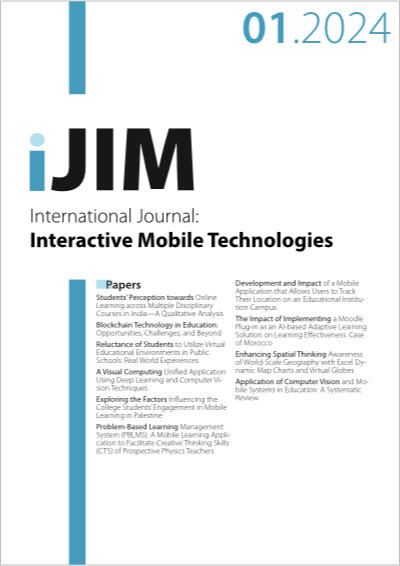A Visual Computing Unified Application Using Deep Learning and Computer Vision Techniques
DOI:
https://doi.org/10.3991/ijim.v18i01.42673Keywords:
Deep Learning, Convolution Neural Networks, Computer Vision Techniques, Visual ComputingAbstract
Vision Studio aims to utilize a diverse range of modern deep learning and computer vision principles and techniques to provide a broad array of functionalities in image and video processing. Deep learning is a distinct class of machine learning algorithms that utilize multiple layers to gradually extract more advanced features from raw input. This is beneficial when using a matrix as input for pixels in a photo or frames in a video. Computer vision is a field of artificial intelligence that teaches computers to interpret and comprehend the visual domain. The main functions implemented include deepfake creation, digital ageing (de-ageing), image animation, and deepfake detection. Deepfake creation allows users to utilize deep learning methods, particularly autoencoders, to overlay source images onto a target video. This creates a video of the source person imitating or saying things that the target person does. Digital aging utilizes generative adversarial networks (GANs) to digitally simulate the aging process of an individual. Image animation utilizes first-order motion models to create highly realistic animations from a source image and driving video. Deepfake detection is achieved by using advanced and highly efficient convolutional neural networks (CNNs), primarily employing the EfficientNet family of models.
Downloads
Published
How to Cite
Issue
Section
License
Copyright (c) 2023 Sowmya B J, Meera, Dr. S. Seema, Dayananda P, Supreeth S, Shruthi G, Dr. Rohith S

This work is licensed under a Creative Commons Attribution 4.0 International License.



